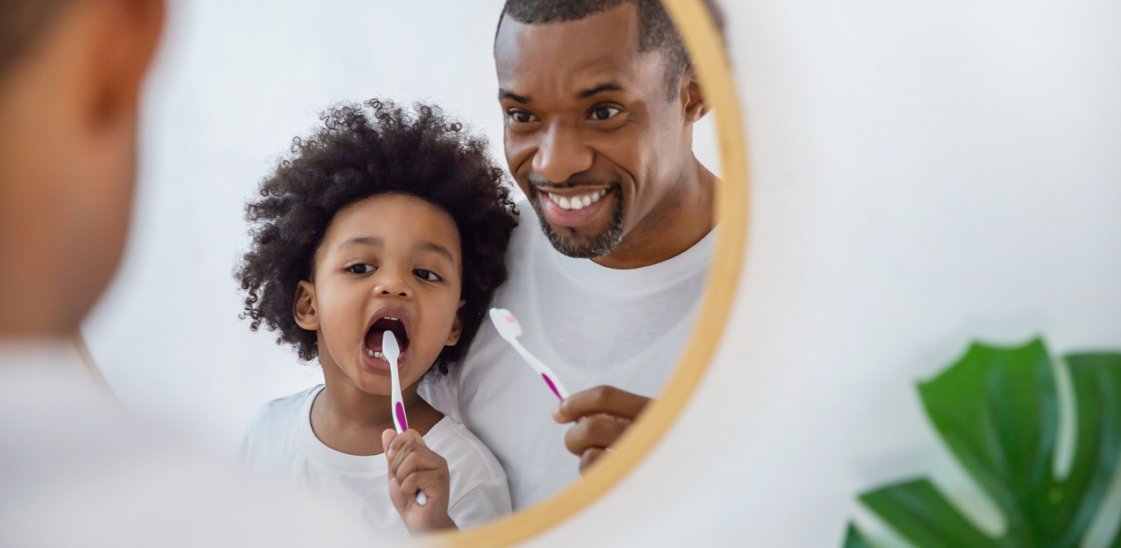
How to explain plaque to a child
Encouraging children to take care of their own teeth and gums can be tricky. While the process needs to involve explaining what dental plaque is and what can happen to their teeth if they are not properly cared for, dental education needs to be taught in a fun way that does not bore or frighten them.
Here at DenTek, we’ve created this handy guide designed to help parents and guardians to explain to their children what plaque is, what it can do to oral health if it is not removed, and how it can be prevented. This guide also offers a range of handy tips you can use to encourage your little ones to start brushing and flossing their own teeth.
Explaining plaque to kids
Explaining the ins and outs of medical conditions can be difficult for adults, never mind when trying to explain them to children. For this reason, just as you would when talking about other health conditions – whether it be tummy aches, colds or runny noses – when explaining what plaque is to children, it is important to deliver the conversation at their level.
This is to say, instead of talking about plaque as ‘a film of bacteria that forms on teeth over time that can cause tooth decay and gum disease if let to develop’, you should introduce plaque as ‘that sticky and slimy stuff you get on your teeth when you haven’t brushed them for a while’. Appropriately simplifying the topic, without patronising or trivialising, is the key here.
Once you have established that your child knows what you are referring to when you talk about plaque, next you need to explain why it is important to prevent plaque from appearing and how to safely remove it through standard oral hygiene techniques such as brushing, flossing and using mouthwash. We will look into the best ways to encourage your kids to brush their teeth below.
Finally, you need to make sure your child understands what can happen to their oral health if they don’t follow a regular dental hygiene routine. This can be tricky, as the consequences of letting plaque develop into tartar and causing tooth decay, bad breath and gum disease can sound scary and overwhelming if not explained in a sensitive, child-friendly way.
Once again, this is a balancing act between attempting not to trivialise the topic while also not going overboard with graphic details that might frightening the child. Once your child’s teeth start to touch one another and it’s time to brush and floss regularly, we would recommend being honest and to the point without going into unnecessary, gory detail. Something along the lines of:
‘That’s why it’s so important that you brush your teeth twice a day and floss at least once. If you don’t, sticky plaque may build up on your teeth and you could get cavities or poorly gums’.
How to encourage your children to brush their teeth
Whether you’re teaching your pre-teen to properly brush their teeth using both their toothbrush and an interdental brush or you’re simply encouraging your toddler to brush their own teeth for the first time with the help of our kid’s fun flossers, the key is to make the process as fun as possible. This can be done in a number of ways, such as:
– Letting them choose their own products
Although forming an oral care routine is non-negotiable, allowing your child to choose their own toothbrush and toothpaste (from a pre-approved list of child-appropriate products) can give them a sense of empowerment. This can help to encourage them to keep up with their new routine. You can even allow them to have a number of different brushes in a range of colours, giving them even more choice when it comes time to brush each day.
– Play games
Using games, music, apps and even props to add a little bit of fun to toothbrushing can be enough to turn oral hygiene into something your kids look forward to. Allow your children to bring their favourite doll or stuffed animal into the bathroom and let them practice brushing their teeth while you brush your child’s. Alternatively, use mobile phone apps to play music or show child-friendly videos that encourage toothbrushing.
– Lead by example
A simple but important tip, try to brush your own teeth at the same time as your child. Although this is much easier to do in the morning than at night, infants love mimicking what their parents are doing, so by simply brushing your teeth in front of your child, you are showing them what to do and subtly encouraging them to follow suit. You could also let your little one practice brushing your teeth while you brush theirs![1]
– Use rewards
Positive association and incentives are powerful tools in a parent’s arsenal, and both can be used to encourage your child to brush their teeth. Whether you allow your child five minutes more screen time per day or you reward them with a bonus bedtime story each evening if they brush their teeth properly twice a day as agreed, there is nothing wrong with using treats (in moderation) as a form of motivation.
Resources:
[1] https://www.nhs.uk/live-well/healthy-teeth-and-gums/taking-care-of-childrens-teeth/




